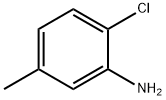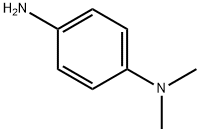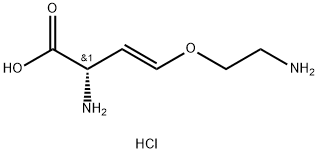2-Chloro-5-methylaniline
Synonym(s):6-Chloro-m-toluidine
- CAS NO.:95-81-8
- Empirical Formula: C7H8ClN
- Molecular Weight: 141.6
- MDL number: MFCD00007674
- EINECS: 202-454-7
- SAFETY DATA SHEET (SDS)
- Update Date: 2025-01-27 09:38:02

What is 2-Chloro-5-methylaniline?
Chemical properties
White solid
Chemical properties
The chloromethylanilines are colorless or white crystalline solids or liquids, some have a mild fishy odor.
The Uses of 2-Chloro-5-methylaniline
2-Chloro-5-methylaniline is used in the synthesis and preparation of acylthiourea derivative for potential used of anti-viral agents against vaccinia and La Crosse viruses.
Potential Exposure
Most of the isomers are used in dyestuff manufacture. The 3-chloro-para isomer is used to kill birds. It is marketed as pelleted bait for control of bird populations.
Shipping
UN2239 Chlorotoluidines, solid, Hazard Class: 6.1; Labels: 6.1-Poisonous materials. UN3429 Chlorotoluidines, liquid, Hazard Class: 6.1; Labels: 6.1- Poisonous materials
Incompatibilities
Incompatible with oxidizers, strong acids; chloroformates, and acid anhydrides, isocyanates, aldehydes forming fire and explosive hazards.
Properties of 2-Chloro-5-methylaniline
| Melting point: | 31-33°C |
| Boiling point: | 228-230°C |
| Density | 1.1359 (rough estimate) |
| refractive index | 1.5748 (estimate) |
| Flash point: | 228-230°C |
| storage temp. | Keep in dark place,Inert atmosphere,Room temperature |
| solubility | Chloroform (Sparingly), Methanol (Slightly) |
| pka | 2.78±0.10(Predicted) |
| form | powder to lump |
| color | White to Almost white |
| CAS DataBase Reference | 95-81-8(CAS DataBase Reference) |
| NIST Chemistry Reference | 2-Chloro-5-methylaniline(95-81-8) |
| EPA Substance Registry System | Benzenamine, 2-chloro-5-methyl- (95-81-8) |
Safety information for 2-Chloro-5-methylaniline
| Signal word | Warning |
| Pictogram(s) |
 Exclamation Mark Irritant GHS07 |
| GHS Hazard Statements |
H315:Skin corrosion/irritation H319:Serious eye damage/eye irritation H335:Specific target organ toxicity, single exposure;Respiratory tract irritation |
| Precautionary Statement Codes |
P261:Avoid breathing dust/fume/gas/mist/vapours/spray. P280:Wear protective gloves/protective clothing/eye protection/face protection. P301+P312:IF SWALLOWED: call a POISON CENTER or doctor/physician IF you feel unwell. P305+P351+P338:IF IN EYES: Rinse cautiously with water for several minutes. Remove contact lenses, if present and easy to do. Continuerinsing. |
Computed Descriptors for 2-Chloro-5-methylaniline
New Products
2-Propanamine, 1-chloro-, hydrochloride (9CI) 3-Pyridineacetonitrile, α-hydroxy- 3-Iodophenylacetic acid 3-(hexyloxy)-4-(pyridin-3-yl)-1,2,5-thiadiazole 2-Hexyn-1-ol Dibenzo-18-crown-6 2-Hexanone, 98% Sodium molybdate dihydrate,98% 2,3-Dimethylphenol, 98% 4,4'-Oxydianiline Isoquinoline, 96% 2-Amino-4,6-difluorobenzoic acid, 95% (R)-2-Methylpyrolidine-2-carboxylic acid (De Mepro) Ramipril Sacubitril- Valsartan Boc-his(trt)-OH Fmoc-L-Glu-OtBu Boc-L-Tyr(tBu)-OH N N Dimethylformamide Dimethyl Acetal (Dmf Dma) Semi carbazide Hydrochloride 1-Ethyl-3-(3-Dimethylaminopropyl)-Carbodiimide Hydrochloride [EDC Hcl] Trans-4-Aminocyclohexanol [4tac] 2-[1-(Mercaptomethyl)Cyclopropyl]Acetic Acid 2-Chloromethyl-4-methyl-quinazolineRelated products of tetrahydrofuran








You may like
-
 3-Amino-4-chlorotoluene 95-81-8 98%View Details
3-Amino-4-chlorotoluene 95-81-8 98%View Details
95-81-8 -
 2-Chloro-5-methylaniline CAS 95-81-8View Details
2-Chloro-5-methylaniline CAS 95-81-8View Details
95-81-8 -
 2-Chloro-5-methylaniline CAS 95-81-8View Details
2-Chloro-5-methylaniline CAS 95-81-8View Details
95-81-8 -
 15761-38-3 N-Boc-L-Alanine >98%View Details
15761-38-3 N-Boc-L-Alanine >98%View Details
15761-38-3 -
 6485-34-3 Saccharin Calcium >98%View Details
6485-34-3 Saccharin Calcium >98%View Details
6485-34-3 -
 (S)-2-Methylpyrrolidine-2-carboxylic acid HCl (MePro) 1508261-86-6 >98%View Details
(S)-2-Methylpyrrolidine-2-carboxylic acid HCl (MePro) 1508261-86-6 >98%View Details
1508261-86-6 -
 Fmoc-Gly-Pro-OH >98%View Details
Fmoc-Gly-Pro-OH >98%View Details
212651-48-4 -
 18568-74-8 >98%View Details
18568-74-8 >98%View Details
18568-74-8
